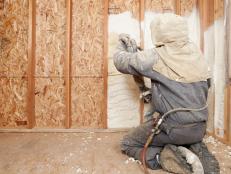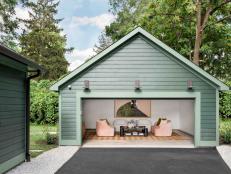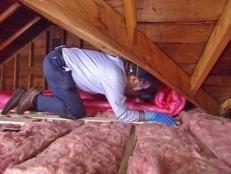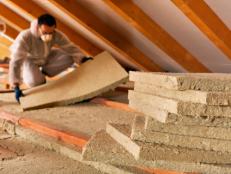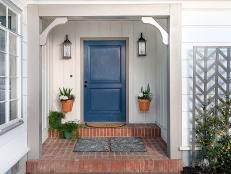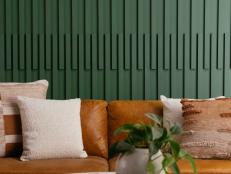How to Insulate a Crawl Space
Insulating your basement crawl space can improve the energy efficiency of your whole home. Learn more about why it’s important and get tips on how to install it yourself.
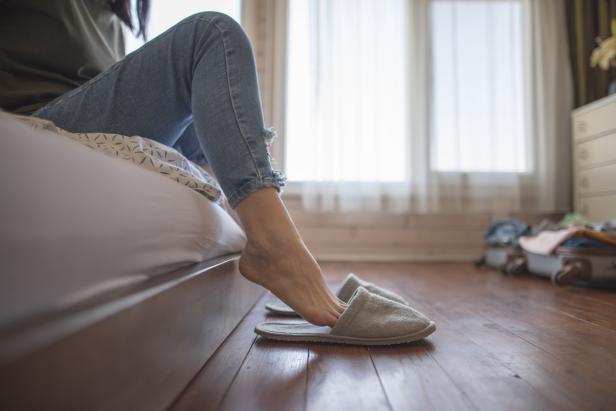
freemixer
Cold floors? Take the necessary steps to insulate your crawl space and improve your home's energy efficiency.
Ever notice the floor temperatures in the first level of your home? Feel the urge to wear socks or slippers? Cold floors are a symptom of poor basement or crawl space insulation. Crawl space insulation is just as important as wall insulation. Insulation beneath the floors of your home and along foundation walls can help improve energy efficiency and preserve your home’s air quality. Without insulation, both warm and cool air can escape through the floors and cause your home energy systems to work harder to keep a stable indoor temperature.
What is a crawl space? A crawl space is an area between the ground and the first-floor joists that support your home. This space can be subterranean and can vary in square footage and height. In some spaces, you may only have enough clearance to crawl (hence the name). In deeper crawl spaces, you may be able to comfortably crouch or stand. Some houses have crawl spaces while others have basements or are built on a slab.
Crawl spaces can be either ventilated or unventilated, which makes a difference in how the space is insulated:
- Ventilated crawl spaces offer intentional airflow to eliminate moisture year-round. There is less likelihood of mold and standing water in a ventilated crawl space, but a homeowner must still take action to prevent airflow from rising through the floorboards. Ventilated spaces will get cold during the winter and warm during the summer.
- Unventilated crawl spaces are more isolated from temperature fluctuations but more prone to moisture and humidity issues. Insulation options must be able to withstand moisture. A homeowner may insulate the walls of the crawl space to reduce airflow in addition to choosing moisture-resistant insulation between the joists.
Improving your home’s crawl space insulation is a project that many homeowners are comfortable taking on themselves; however, as you plan how to insulate your crawl space, keep in mind that the placement of your foundation and its drainage introduce different challenges. When in doubt, a professional can help you navigate a (literally) tight situation.
The Importance of an Insulated Crawl Space
You may not spend a lot of time in your home's crawl space, but it’s a really good idea to become familiar with it. If you have a crawl space, open the access hatch and look around. If you aren’t comfortable going all the way in, use a flashlight to understand the landscape beneath your home. With your own eyes, you can check for existing insulation, drainage or moisture issues and get a better understanding of the home’s ventilation, electrical and plumbing systems.
Unlike a basement with a finished floor, your crawl space is likely only soil or gravel. It may retain extra moisture and humidity and if unventilated, may become a breeding ground for bacteria and mold. A moist crawl space lacking ventilation can even damage the condition of your floor joists. As such, it’s important to identify ways you can protect your home. Often, it starts with improving the insulation in your crawl space.
Different types of crawl spaces require different forms of insulation. They work to achieve the same goal of enclosing a space in a thermal envelope. A well-insulated crawl space can:
- reduce energy bills.
- improve your home’s air quality by blocking moisture and mold.
- manage radon gas, if present.
- reduce musty smells.
- warm cold floors.
- protect wood beams from damage, which in turn, protects interior floors from buckling or sagging.
- reduce infestations.
How Do You Know if You Need Insulation?
Cold floors, high energy bills, unusual allergies or illness and warping floorboards inside your home can all indicate your crawl space may need attention.
The easiest way to tell if crawl space insulation is inadequate is to check it out. Put on an N-95 mask to protect yourself from possible mold and enter through the access hatch.
As you look inside, determine if your crawl space is ventilated or unventilated. Then, audit for the following:
- Is there any standing water?
- Does it smell musty or moldy?
- Is black mold visible on wooden surfaces?
- Is there any existing insulation and is it damaged?
- Do you see any signs of water damage, such as a high water mark on the foundation walls?
- Are floor joists solid, warping or showing signs of decay?
You can also hire a professional to provide an energy audit. Traci Fournier, Vice President of Operations of One Hour Heating & Air Conditioning, advises: "If the energy audit includes a heat load calculation, it can determine how much heat energy and moisture is being transferred between your crawl space and the occupied space. The auditor can then make recommendations on air sealing and insulation. In humid areas, the recommendations might also include a dehumidifier."
These observations will guide you through your project. If you have mold, you may start by hiring a mold remediation specialist. If you have damaged joists, consult with a crew to determine if repairs are necessary. If you find old insulation, you may choose to hire a company that will take care of removing the old material. If it's perfectly dry and easy to navigate? It might be an easy job for you to handle on your own.
Types of Insulation for Crawl Spaces
Learning how to insulate a crawl space depends on the type of insulation your home needs, and the types of insulation you need for your crawl space will vary based on your space.
Vapor Barrier
A 6 mil polyethylene vapor barrier is a bare minimum component that every crawl space should have installed. It won’t help actually improve the energy efficiency of your home, but it is an affordable way to manage moisture in your crawl space. A vapor barrier may be enough to help block allergens and mold from entering the home through the joists and prevent moisture and underground gasses from entering through the soil or stone base. The crawl space should be free of mold and standing water before a vapor barrier is installed.
Duct and Pipe Insulation
Insulate exposed HVAC ductwork and pipes to improve energy efficiency in those systems. Ductwork can easily be wrapped with 5mm thick aluminum barriers. Pipe insulation tape or adhesive pipe covers can help insulate exposed plumbing.
Fiberglass Insulation
Faced fiberglass insulation is among the most affordable types of insulation per square foot, but it can only be used in well-ventilated crawl spaces. "There are a few different approaches that can be taken with fiberglass insulation products," shares Ted Winslow, Brand Product Manager with CertainTeed. "Considering that in most cases, crawl spaces should be vented, fiberglass insulation is often used to insulate the floor/ceiling above the crawlspace. InsulPURE or Sustainable Insulation both work great in these applications. CertainTeed’s Basement Wall Blanket Insulation is also a great solution for insulating crawl space walls."
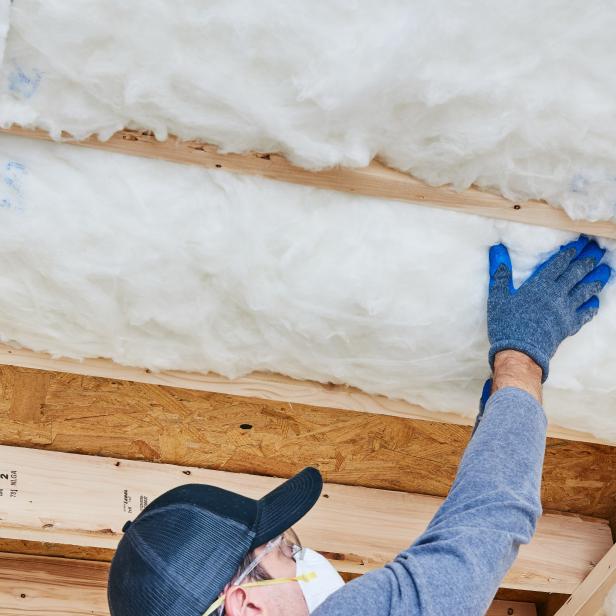
CertainTeed
Fiberglass insulation is being installed between floor joists in a home's crawl space.
Moisture greatly affects the R-value and overall effectiveness of fiberglass, which can lead to mold growth. It should only be installed in a ventilated, dry crawl space.
Once the fiberglass insulation is installed between joists, plan to attach a layer of the plastic vapor barrier to the joists as a second line of defense against moisture.
Spray Foam
A combination of a 6 mil vapor barrier and a spray foam insulation kit can help improve the energy efficiency of both ventilated and unventilated crawl spaces. Spray foam is more costly than other insulation options, but it can uniquely attach itself to seal small cracks and effectively reduce airflow. Without airflow fluctuating temperatures in a crawl space, energy efficiency will improve. Spray foam has a higher R-value than fiberglass insulation and also reduces the presence of mold and moisture and helps prevent infestation.
A few things to remember:
- Ventilate the crawlspace well while it's being installed and curing, as spray foam may outgas depending on its chemicals.
- Spray foam is more permanent than other insulations. Once cured, it is very hard to remove.
- Start with a test spray. This material expands to about 100 times its initial volume, so you may need to get comfortable with how it fills the space.
Rigid Foam Board
There are a number of foam board insulation products that can help insulate between the floor joists and along the walls of your crawl space. Owens Corning offers XPS for this application. Before getting started, homeowners need to differentiate between the options. “Foamular XPS has numerous advantages over EPS and Polyiso insulation for a wall application,” says Jason Bollinger, Product Manager, Foamular XPS. “Flexural strength allows Foamular to bend and move without breaking as easily as EPS. Moisture infiltration is also damaging to insulation performance. Since EPS and Polyiso have higher moisture absorption it makes them less effective in unventilated crawl spaces. The facer on Polyiso can also make it challenging to easily cut.”
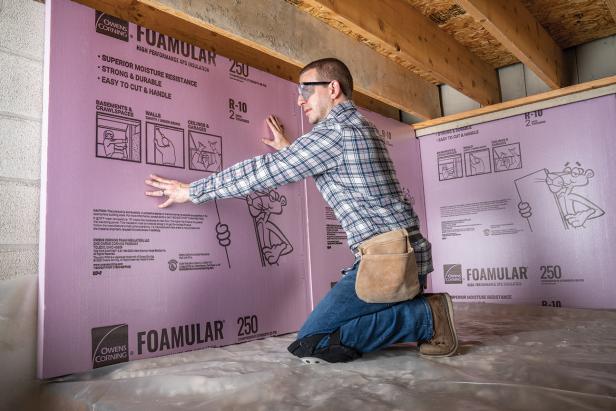
Eric R Eggly, Owens Corning
FOAMULAR® insulation by Owens Corning is installed on the walls of a crawl space. The panels overlap a vapor barrier.
All products are intended to help reduce the airflow and improve energy efficiency inside the home. Rigid foam is denser than fiberglass insulation which makes it a better candidate in humid or unvented crawl spaces. It can cost about twice as much; however, it can easily be attached using adhesive. Other products are wrapped by 3 mil vapor barrier, allowing the product to serve double duty in moisture control. To make the most of rigid foam board, Bollinger notes, “the vapor barrier on the foundation floor needs to be sealed around the perimeter and run up the wall.” It’s also best to fill the cracks between boards with a bead of spray foam.
DIY vs. Hiring a Pro
Even if there are many worst-case scenarios relating to moisture and mold, many crawl space insulation jobs are relatively easy and can be done by a single person, often in just a day or over a weekend.
The conditions of your crawl space are largely going to determine whether or not you hire the job out or pursue it as a DIY. Here's a guide:
- If your home has had extensive moisture damage or mold growth, start by hiring a mold remediator.
- If your crawl space has drainage issues, improve exterior drainage before investing in insulation.
- If your home was previously insulated and needs a full redo, it may be advantageous to hire a pro who can remove the old insulation while replacing it with new material and vapor barriers.
- If your knees and back can’t handle working, hunched over, in a crawl space with minimal clearance, spare yourself and let a pro do the job.
- If your basement is well-ventilated and dry, adding fiberglass batting between the ceiling joists is a project that can be completed in a single day to instantly improve the energy efficiency of your home.
- If there are pipes or venting exposed in your crawl space, you can easily find duct tape and pipe insulation at your hardware store to improve the efficiency of those systems, too.






